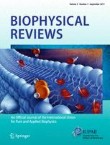
Abstract
Background
Postoperative gastrointestinal leak and venous thromboembolism (VTE) are devastating complications of bariatric surgery. The performance of currently available predictive models for these complications remains wanting, while machine learning has shown promise to improve on traditional modeling approaches. The purpose of this study was to compare the ability of two machine learning strategies, artificial neural networks (ANNs), and gradient boosting machines (XGBs) to conventional models using logistic regression (LR) in predicting leak and VTE after bariatric surgery.
Methods
ANN, XGB, and LR prediction models for leak and VTE among adults undergoing initial elective weight loss surgery were trained and validated using preoperative data from 2015 to 2017 from Metabolic and Bariatric Surgery Accreditation and Quality Improvement Program database. Data were randomly split into training, validation, and testing populations. Model performance was measured by the area under the receiver operating characteristic curve (AUC) on the testing data for each model.
Results
The study cohort contained 436,807 patients. The incidences of leak and VTE were 0.70% and 0.46%. ANN (AUC 0.75, 95% CI 0.73–0.78) was the best-performing model for predicting leak, followed by XGB (AUC 0.70, 95% CI 0.68–0.72) and then LR (AUC 0.63, 95% CI 0.61–0.65, p < 0.001 for all comparisons). In detecting VTE, ANN, and XGB, LR achieved similar AUCs of 0.65 (95% CI 0.63–0.68), 0.67 (95% CI 0.64–0.70), and 0.64 (95% CI 0.61–0.66), respectively; the performance difference between XGB and LR was statistically significant (p = 0.001).
Conclusions
ANN and XGB outperformed traditional LR in predicting leak. These results suggest that ML has the potential to improve risk stratification for bariatric surgery, especially as techniques to extract more granular data from medical records improve. Further studies investigating the merits of machine learning to improve patient selection and risk management in bariatric surgery are warranted.






